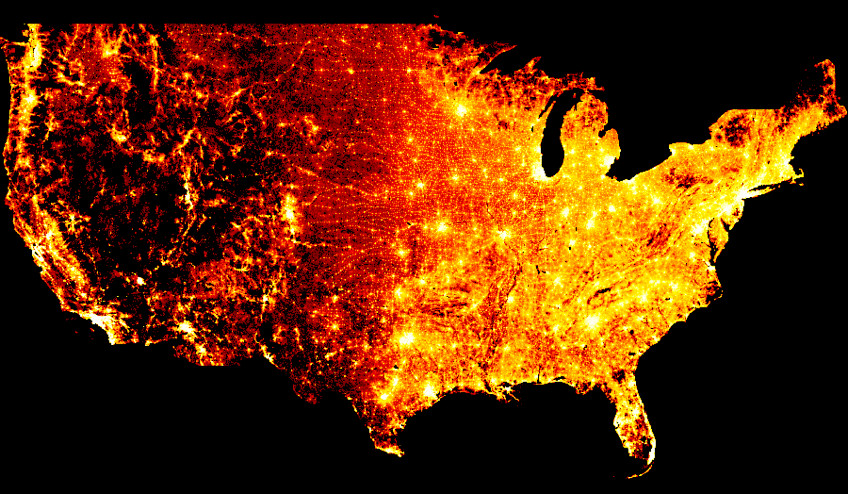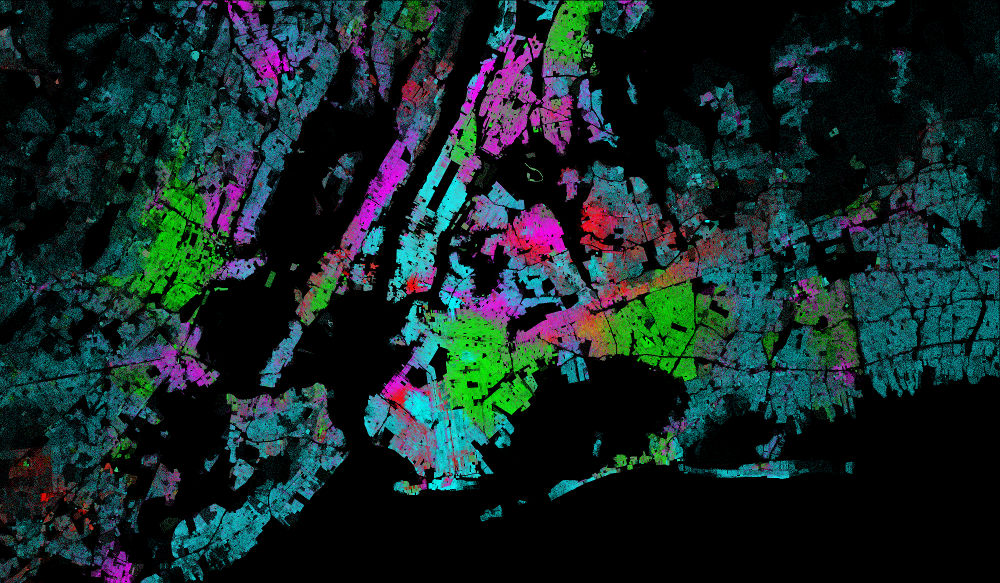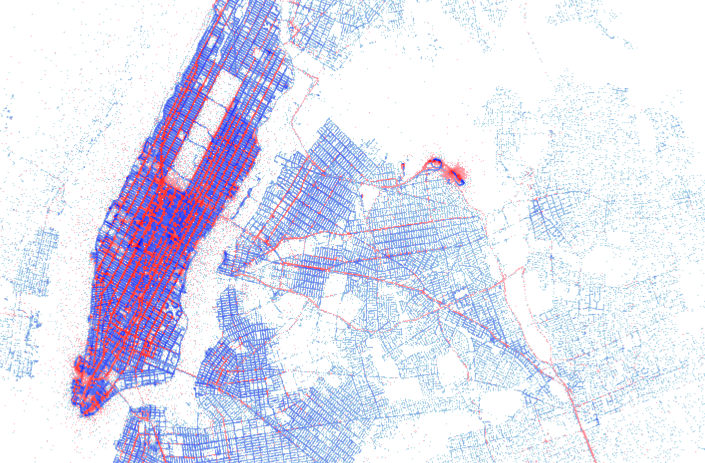Datashader is a data rasterization pipeline for automating the process of creating meaningful representations of large amounts of data. Datashader breaks the creation of images of data into 3 main steps:
-
Projection
Each record is projected into zero or more bins of a nominal plotting grid shape, based on a specified glyph.
-
Aggregation
Reductions are computed for each bin, compressing the potentially large dataset into a much smaller aggregate array.
-
Transformation
These aggregates are then further processed, eventually creating an image.
Using this very general pipeline, many interesting data visualizations can be created in a performant and scalable way. Datashader contains tools for easily creating these pipelines in a composable manner, using only a few lines of code. Datashader can be used on its own, but it is also designed to work as a pre-processing stage in a plotting library, allowing that library to work with much larger datasets than it would otherwise.
The best way to get started with Datashader is install it together with our extensive set of examples, following the instructions in the examples README.
If all you need is datashader itself, without any of the files used in
the examples, you can install it from the bokeh channel using the using the
conda package manager:
conda install -c bokeh datashaderIf you want to get the very latest unreleased changes to datashader (e.g. to edit the source code yourself), you can tell Python to use a git clone instead:
git clone https://github.com/bokeh/datashader.git
cd datashader
pip install -e .Datashader itself is not currently provided on pip/PyPI, to avoid broken or low-performance installations that come from not keeping track of C/C++binary dependencies such as LLVM (required by Numba).
After working through the examples, you can find additional resources linked from the datashader documentation, including API documentation and papers and talks about the approach.



